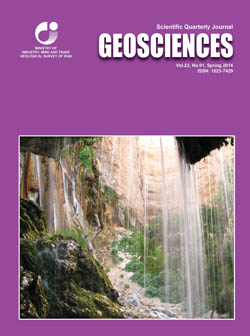Document Type : Original Research Paper
Authors
1 Ph.D., Department of Mining Engineering, Science and Research Branch , Islamic Azad University, Tehran, Iran.
2 Professor, Department of Mining & Metallurgical Engineering, Amirkabir University of Technology, Tehran, Iran.
3 Associate Professor, Department of Mining Engineering, Tarbiat Modares University, Tehran, Iran.
4 Professor, School of Mining Engineering, College of Engineering, University of Tehran, Tehran, Iran.
Abstract
In this research the effect of bubble surface area flux on flotation rate constant of coal particles was investigated and the results showed that flotation rate constant increased with increasing bubble surface area flux. The obtained Maximum flotation rate constant was 3.30 /min while the particle size and bubble surface area flux were -37mm and 25.891/s, respectively. The bubble-particle collision, attachment and detachment efficiency were calculated in order to analyze the results. The obtained Maximum Stokes collision efficiency was 81.57% while the particle size, bubble surface area flux, and flotation rate constant were -500+420mm, 27.431/s, and 1.17/min, respectively. The obtained Maximum Yoon, Stokes and Potential efficiency were 94.66, 56.74 and 45.61%, respectively. Moreover, the obtained maximum detachment efficiency was 34.57% while the particle size, bubble surface area flux and flotation rate constant were -500+420mm, 16.771/s, and 0.85 /min. The collection efficiency increased with increasing of the bubble surface area flux. The collection efficiency was high for the particle size range of -106+37mm and for out of this particle size range it decreased steadily. So, the low efficiency of floating coarse particles can be attributed to the high efficiency of detachment while the low efficiency of floating of the fine particles was due to the low efficiency of collision.
Keywords

